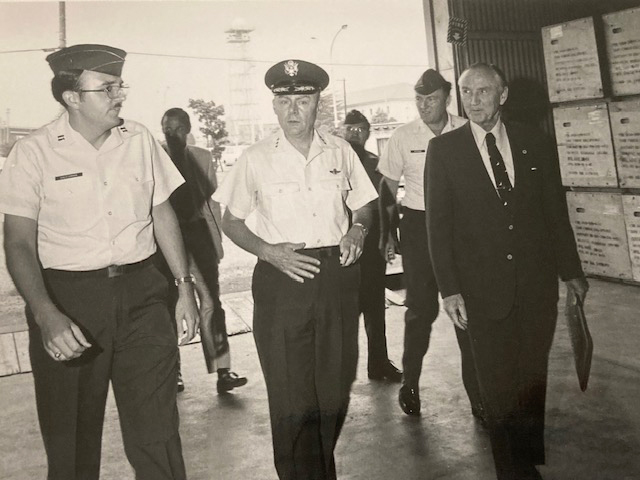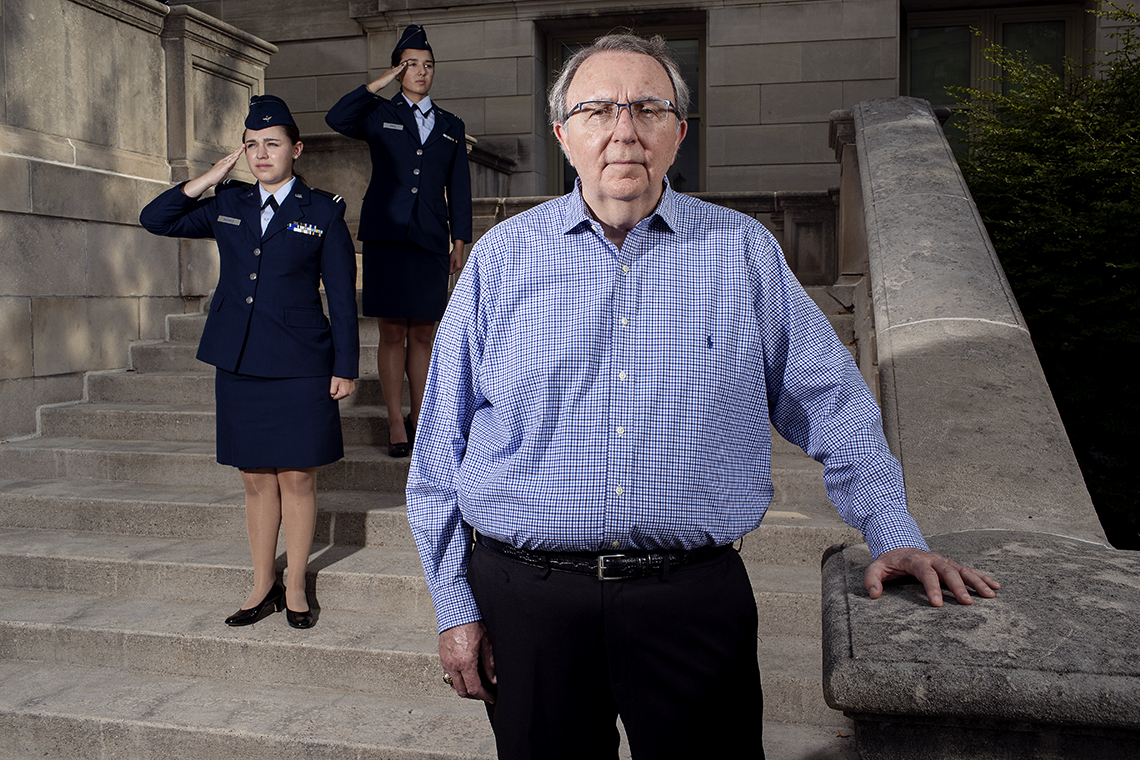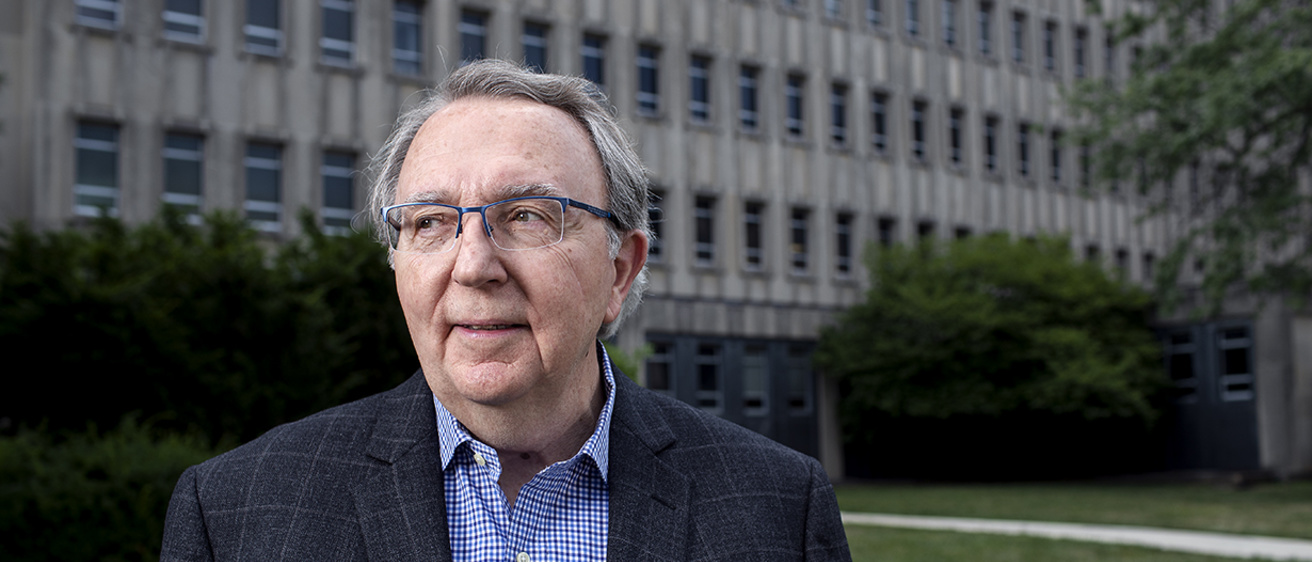The year was 1968; the height of the Vietnam War.

Iowa accounting student Patrick Chesterman (BBA72) signed up for Air Force ROTC to ensure he would one day enter the military as an officer as opposed to being drafted. Just one month after graduation, he received his placement orders: Dyess Air Force Base in Abilene, Texas. Which is how, in July 1972, Chesterman and his young family found themselves driving south in scorching heat so he could begin work as an Air Force petroleum logistics officer.
Chesterman will be the first one to tell you he majored in accounting because numbers always “clicked” for him. He did well in math and had long dreamed of attending the business college at the University of Iowa. The Dubuque, Iowa native says he fully expected to pursue a career as a CPA.
But the letter from the U.S. Air Force detailing his seemingly random assignment changed the entire trajectory of young Chesterman’s life.
The assignment—to oversee 80 airmen responsible for refueling aircraft assigned to the base and aircraft transiting through Dyess—was shocking to him. “With my degree, of course I thought I’d be going into accounting, finance, or budgeting for the military,” he says, noting he knew nothing whatsoever about petroleum, let alone high-speed refueling operations. “I remember thinking: what did I get myself into here? But it was also an adventure and I thought: Here we go!”
His experience at Iowa proved invaluable.
“From the time I went to Texas, there was an instant credibility for having an accounting degree from Iowa.”
Despite facing a learning curve with fuel logistics, he relied on standard accounting procedures and business management principles he had received training in at Iowa. “I quickly learned there was not only an operational component to what I did, but an accounting component as well.” At the time, Dyess was issuing millions of gallons a month. “Despite the reputation that things may be loose with the government, we were charged with accounting for every gallon.”
In his four years in Texas, Chesterman steered his unit into becoming the highest-ranked Air Force petroleum operation. During that time, the U.S. energy crisis—the result of an OPEC embargo on oil shipments to the U.S.—tested his resolve. He quickly developed a plan to maximize not only his own base’s fuel resupply, but helped other Air Force bases remain fully operational.

The success would lead Chesterman to increasingly challenging petroleum logistics military assignments around the world. After being promoted to captain at Dyess, he was reassigned to Yokota Air Base near Tokyo, Japan, in late 1976. Three years later, it was back stateside to MacDill Air Force Base in Tampa, Fla.; then on to the University of South Florida in 1982 where he took on the challenge of creating an Air Force ROTC program (which would set records by recruiting 200+ cadets within three years). From there, it was on to four years in Norfolk, Va. at the U.S. Naval Station—headquarters of U.S. Atlantic Command—working on refueling issues for all branches of the military supporting operations in the region.
Expertise developed from years of work gave him a front-row seat to a number of highly classified operations, including 1980’s Operation Eagle Claw: the failed Iranian hostage rescue attempt in which eight American service members were killed when two U.S. aircraft collided in the desert. “I had six guys on the refueling mission in the desert that night, and thankfully they all survived,” he recalls.
His promotion to lieutenant colonel would take Chesterman to his penultimate assignment at the headquarters of Strategic Air Command in Omaha, Neb. There, he says, in critical times he was often the junior officer in the room, such as when General Norman Schwartzkopf would be linked in via then state-of-the-art video technology to hold briefings on Desert Shield/Desert Storm during the 1990/1991 Gulf War.

Twenty years after joining the Air Force, Lieutenant Colonel Chesterman would take a seat at the Pentagon as director of Air Force Fuels Logistics. Now the Air Force expert in petroleum logistics, he presided over a career field of some 4,500 people working in global refueling operations.
“We were doing some $400 million a year in sales for the refueling of commercial and foreign aircraft,” he says, “and issuing something close to 3.5 billion gallons of fuel a year to military aircraft and vehicles. It was a typical large business dealing with resupply, credit approvals, receivables, a revolving stock fund, etc. There was clearly an accounting and financial component to the job, and I had
to rely on my years of experience that were rooted in Iowa.”
Chesterman’s biggest challenge at the Pentagon, and subsequently his biggest accomplishment, was leading the effort to convert the Air Force to a new and safer aviation fuel.
“For years, the Air Force used highly volatile, gasoline-based fuel,” he says. After the Vietnam War, the Air Force conducted studies that proved the explosive nature of the fuel, which had affected planes hit by enemy fire as well
as ground operations. Yet conversion to a different fuel type was long-delayed due to logistical and political complications. “Once I was there, we took on the initiative, worked with congressional staffers and suppliers, and by 1994 had converted the Air Force to a new, safer fuel.”
Chesterman would leave the military in 1994; transitioning to work in the energy industry. He served in senior-level positions with two energy companies, including COO of Ferrellgas during its acquisition of Blue Rhino Propane.

He now lives with wife Pam in Overland Park, Kan., where they enjoy spending time with their daughter, Tracie, and her children when they visit from New York.
Tracie Chesterman, now an attorney, says her dad’s kindness and work ethic made him a great role model. Also, she says, there is no bigger Hawkeye fan. Despite not living in Iowa since 1972, he has held season football tickets for 36 years and has been a member of the Iowa Alumni Association for 48 years.
He looks back at his career with a combination of awe and humility. “If someone had told me when I was young what my future held,” he says, “I would have thought: ‘No way!’ I never thought I’d be in the military, enjoying that kind of success and challenges. But I enjoyed it all.”
Chesterman’s accomplishments were recognized by the University of Iowa in 2022 when he received a Hawkeye Distinguished Veterans Award—he says, “An honor that I will truly cherish forever!”
This article appeared in the 2023 issue of Iowa Ledger.
